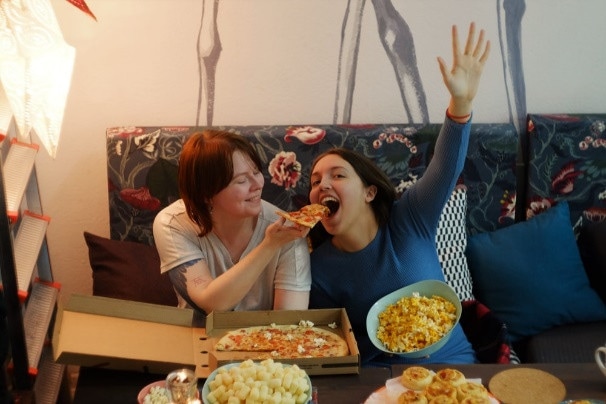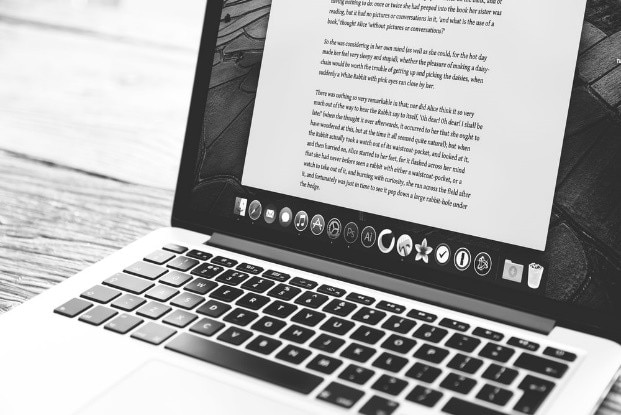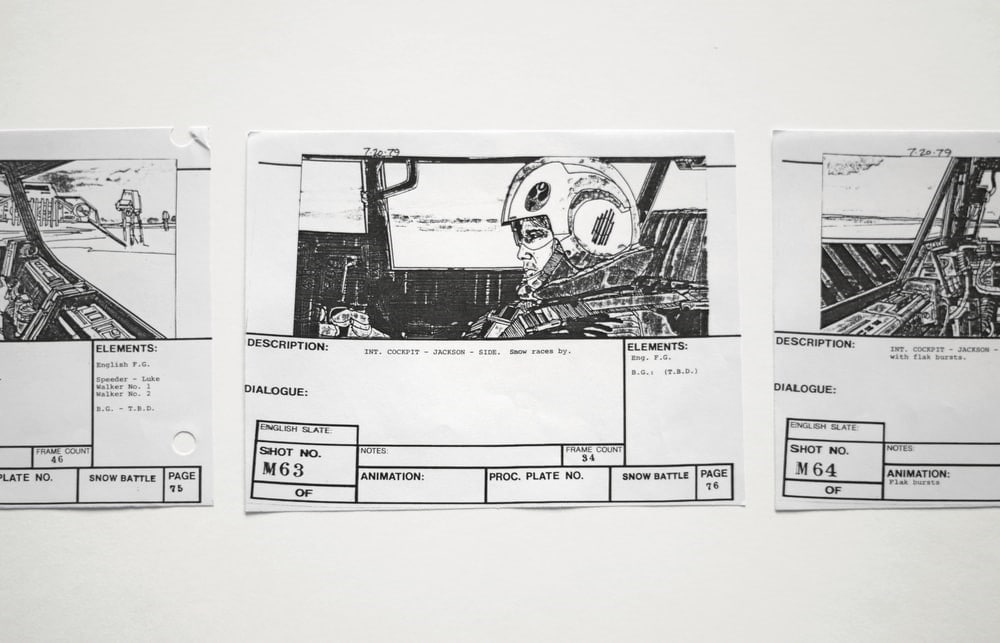![[New] Constructing Cinema Stories](https://thmb.techidaily.com/70a221261e83ff3179ef93192d51afbff1f7257579ffa960f9e7a085032e4b04.png)
[New] Constructing Cinema Stories

Constructing Cinema Stories
A screenplay, also known as a script, is a piece of writing written by a screenwriter for a movie, television show, or video game. These screenplays may be original or modified from previously published material. They also describe the characters’ movements, actions, expressions, and dialogues. A teleplay is a screenplay written specifically for television.
A screenplay is a written text that serves as the foundation for film production. It usually includes not only the characters’ dialogue but also a shot-by-shot outline of the film’s action. This article will cover everything you need to know about screenplays.
Part 1. What is a screenplay?
A screenplay is a piece of writing that contains the dialogue for an entire film or television episode.
A screenplay can be based on original material, such as screenwriter ideas, or on pre-existing works, such as novels. The text is mostly dialogue, with descriptions of the environment, locations, scenery, costumes, and characters thrown in for good measure.
It can be used to ensure that everything in your story is consistent with what you’ve shot. It can also be used to assist with editing!

A screenplay is a script for a film, television show, or play. It tells a story by using dialogue and action to show how the scenes are connected.
Are you considering writing a screenplay?
Are you wondering if it’s worth it?
This article will provide answers to your questions as well as resources to help you get started!
A screenplay is a story that describes what will be seen on film or television. They are written in a script format, which differs from novel writing.
The structure of a screenplay can differ depending on the type of film being produced and the amount of dialogue versus action.
Part 2. Basic standard screenplay formats
Screenplay format is a collection of 12 different elements, and writers should keep in mind that formatting their screenplay will benefit them in the long run.
The first tip is to begin with Fade In, which is located at the top left of the page. This informs your reader of their location and serves as a template for what should be written in your script.
If you want to be a screenwriter, you must be familiar with the proper screenplay format. It is not sufficient to simply write the dialogue and action for your script.

You must also include all the other elements so that no one is confused about what each one means. Many factors must be considered when writing good screenplays, such as formatting to make the screenplay readable to others. The script should be formatted in accordance with industry standards, with adequate margins, spaces between dialogues and action lines, and so on, so that readers can easily follow it.
Screenplays are a type of written or visual storytelling in which dialogue, action, and description are all included. They are typically used in the film industry to pitch a film or television show idea. They can be either fiction or nonfiction, depending on whether they use fictional stories or real-life facts.
Part 3. Templates for screenplay
In simple words, a screenplay format template is a ready-made structure into which characters, movements, and story elements can be inserted to create a usable screenplay. It is essentially a layout with specific characteristics that suit a particular genre of screenwriting.
A psychological thriller script, for example, will have a different structure and pace than an action script. Both genres have storyboard templates that can be used for a variety of stories from each genre.
A thriller script template will structure character movement, staging, and dialogue delivery to look and move like an ideal thriller while preventing it from looking and moving like an action element.
Key features:
• Import from any devices and cams, including GoPro and drones. All formats supported. Сurrently the only free video editor that allows users to export in a new H265/HEVC codec, something essential for those working with 4K and HD.
• Everything for hassle-free basic editing: cut, crop and merge files, add titles and favorite music
• Visual effects, advanced color correction and trendy Instagram-like filters
• All multimedia processing done from one app: video editing capabilities reinforced by a video converter, a screen capture, a video capture, a disc burner and a YouTube uploader
• Non-linear editing: edit several files with simultaneously
• Easy export to social networks: special profiles for YouTube, Facebook, Vimeo, Twitter and Instagram
• High quality export – no conversion quality loss, double export speed even of HD files due to hardware acceleration
• Stabilization tool will turn shaky or jittery footage into a more stable video automatically.
• Essential toolset for professional video editing: blending modes, Mask tool, advanced multiple-color Chroma Key

We currently have screenplay format templates for nearly every theatrical and film genre, including drama, comedy, action, thriller, autobiography, and others. Each of these templates has a unique structure, but the best ones share some characteristics.
1. Characteristics of the Ideal Screenplay Format Template
Regardless of the screenplay genre, each screenplay template has some characteristics that set it apart from the rest. However, all ideal scenarios have the following characteristics in common:
- Complex layout
- Current features
- Configurability
- Creative space
Let’s look at each of the characteristics individually.
2. Comprehensive Layout
If you look at the screenplays for some of the greatest movies ever made, you’ll find that they all contain a complete and detailed story arc with textbook variations in pacing and dialogue as the story progresses.
Yes, almost all screenplays have some holes that may have been overlooked in the writing, but as a structure, they will include all the essential aspects of the story they are telling.
That said, a great screenplay format template:
- Format by genre
- Have enough space for brainstorming and subject research
- Layout of main acts, chapters, and scenes
- Leave room for editing characters and settings (left margin and right margin variations)
- Easy to use for beginners
Aside from some niche genres like anthology and neo-bizarro, every ideal screenplay format template has some combination of these qualities.
3. Contemporary Features
Scenarios have had a similar structure since the beginning of the last century.
The same title page, with the same standard Courier font, text indentation, scene title/slug line and subtitle prefixes (INT-EXT), action line layout, etc. All this has remained unchanged over the years.

However, with the advent of app-based screenwriting software, we have plenty of contemporary features such as automatic page numbers, time of day, parentheses, and pop-ups with specific character names.
Even the general rule of thumb “one-page equals one minute of screen time” doesn’t apply to all scripts today.
While it’s not necessary to have a fully automated script layout interface, any task that can be automated gives the writer more time for important tasks like contributing to off-screen production, recording voice-overs, etc.
Plus, since most writers today prefer a smartphone to a traditional typewriter, it pays to have a screenplay editor in the palm of your hand.
4. Configurability
Rigid script formatting risks making your story look and sound like all the stories that have used it in the past.
The same events, the same character archetypes, the same moves and submissions, and the same build-ups can quickly become boring.
The best storyboard templates have a structure that is created with the genre of the story in mind but gives the writer room to play around with their characters, setting, etc.
For example, when I’m writing a character who’s learning to write a book, I’d like to show her picking up references from nature and various other creative genres and coming back to change her style—not just research from the works of other writers.
Taking an unconventional approach to character development can seem counterproductive and time-consuming. However, a good script draft will allow the writer to do this without making the script unbalanced.
5. Creative Space
Stiffness is a very common factor in most traditional screenplay formats.
A certain rigidity is good because it keeps the story structured and prevents writers from focusing too deeply on one aspect and neglecting the rest.
However, script templates should not be too restrictive in terms of creative freedom for the writer.
For example, an ideal screenwriting template should allow one character out of several to experience a different phase of character development than the others at any point in the plot.

This prevents all characters from looking and sounding like they were cast from a similar mold and have no unique development of their own.
In addition, the best templates should allow screenwriters to adjust their plot development to write for feature films as well as series.
Common fictional tropes have already been adopted by thousands of screenwriters around the world. The job of a perfect template is to give you enough creative space to create a unique story from a traditional genre.
Part 4. Make your own screenplay by using Filmora
After you have chosen what template is more appropriate for your needs, you will have to start writing your script. Here is a step-to-step guide to help you.
(产品推荐)
Wondershare Filmora is video editing software that allows users to create amazing videos quickly and easily by utilizing a variety of powerful editing tools. It has a delightfully simple design that allows anyone to become a great video editor. Filters, animated elements, and other video effects or unique features are also available.
Conclusion
The article has provided the most information about screenplays and how to write one. Not only that, but we’ll also talk about video editing software. We hope that after reading and learning from this source, you will be able to write a better screenplay.
Free Download For Win 7 or later(64-bit)
Free Download For macOS 10.14 or later
- Title: [New] Constructing Cinema Stories
- Author: Paul
- Created at : 2024-07-27 03:01:38
- Updated at : 2024-07-28 03:01:38
- Link: https://extra-information.techidaily.com/new-constructing-cinema-stories/
- License: This work is licensed under CC BY-NC-SA 4.0.



 OtsAV DJ Pro
OtsAV DJ Pro